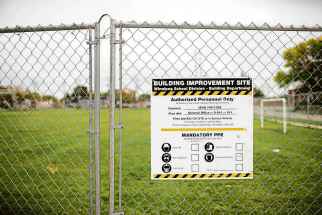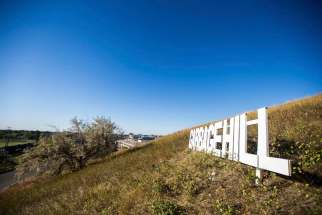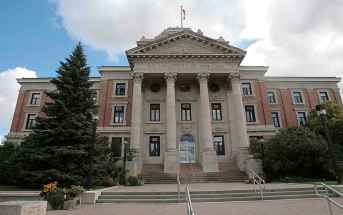Winnipeg school bars field use after high lead level report
Read this article for free:
or
Already have an account? Log in here »
To continue reading, please subscribe:
Monthly Digital Subscription
$0 for the first 4 weeks*
- Enjoy unlimited reading on winnipegfreepress.com
- Read the E-Edition, our digital replica newspaper
- Access News Break, our award-winning app
- Play interactive puzzles
*No charge for 4 weeks then price increases to the regular rate of $19.00 plus GST every four weeks. Offer available to new and qualified returning subscribers only. Cancel any time.
Monthly Digital Subscription
$4.75/week*
- Enjoy unlimited reading on winnipegfreepress.com
- Read the E-Edition, our digital replica newspaper
- Access News Break, our award-winning app
- Play interactive puzzles
*Billed as $19 plus GST every four weeks. Cancel any time.
To continue reading, please subscribe:
Add Free Press access to your Brandon Sun subscription for only an additional
$1 for the first 4 weeks*
*Your next subscription payment will increase by $1.00 and you will be charged $16.99 plus GST for four weeks. After four weeks, your payment will increase to $23.99 plus GST every four weeks.
Read unlimited articles for free today:
or
Already have an account? Log in here »
Hey there, time traveller!
This article was published 13/09/2018 (2646 days ago), so information in it may no longer be current.
Weston School has restricted access to its sports field, amid worries its soil is contaminated by lead.
The Logan Avenue nursery school to Grade 6 facility has put up fences around the field and relegated students to classrooms for indoor recess.
A 2011 report, first brought to light Thursday, outlined results of soil sampling in inner-city Winnipeg neighbourhoods such as Point Douglas, Weston, Minto and Wolseley, which were found to have elevated levels of lead in the 1980s.
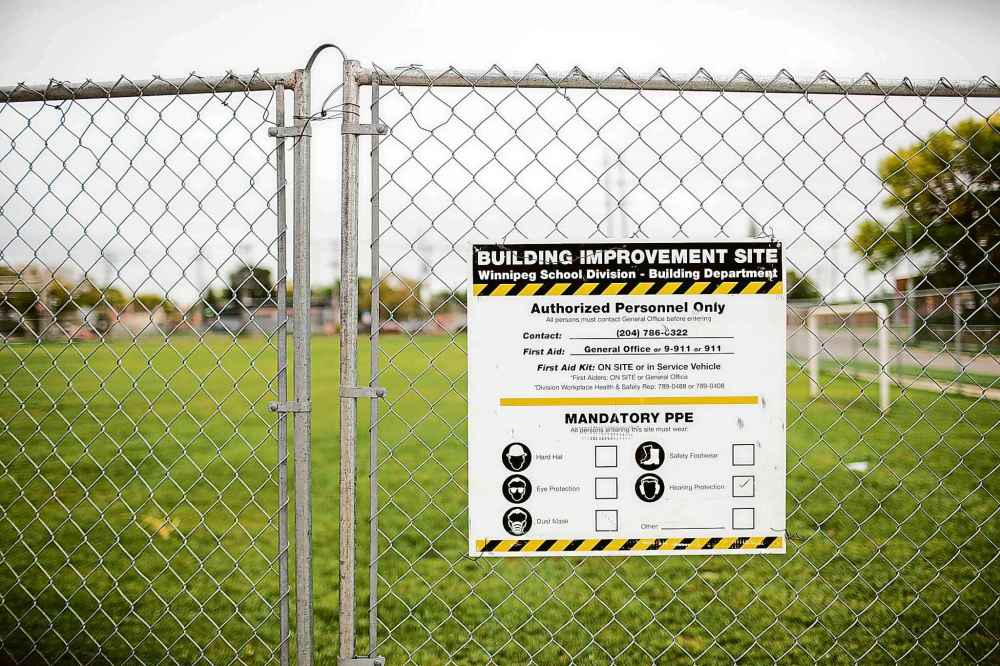
The sites were remeasured in 2007 and 2008, to determine whether they needed more remediation, but the former NDP government sat on the results, according to the province.
Grassy areas within several city parks, including the western portion of Stanley Knowles Park and Weston’s sports field, were found to have lead levels exceeding the guideline of 140 micrograms per gram.
University of Manitoba Prof. Francis Zvomuya, a soil scientist who reviewed the report, pointed out Weston’s field levels exceeded 1,000 μg/g in some parts.
"So that’s way higher than the 140. That’s a risk and that sports field, in my view, shouldn’t be used by kids," Zvomuya told the Free Press. "If they are still using that (field), if it hasn’t been remediated, then this presents a health risk to the kids."
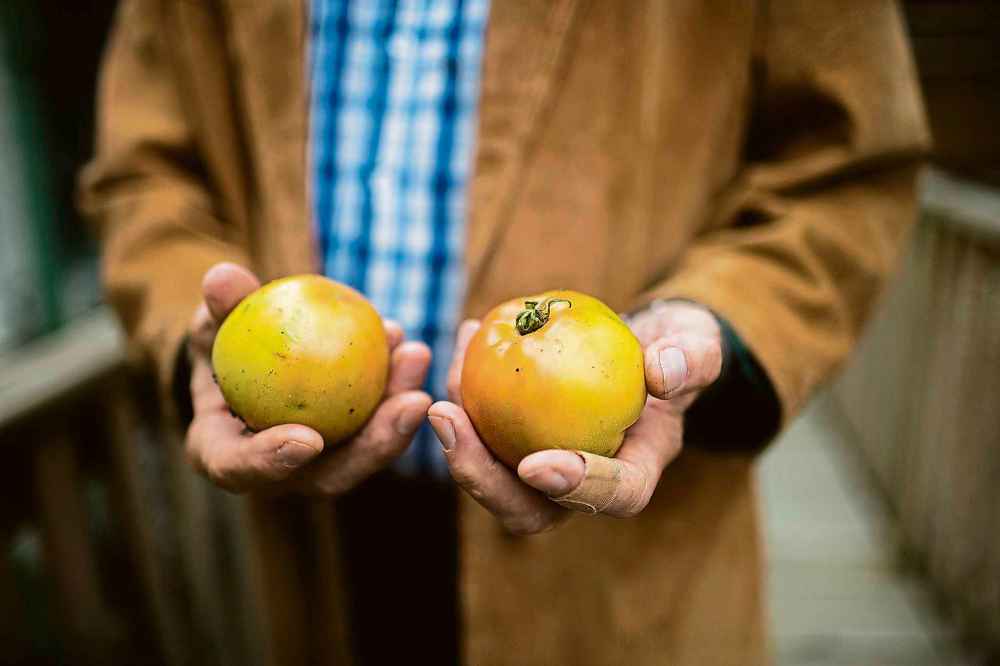
Sel Burrows, chairman of the Point Douglas Residents Committee, is frustrated no one from the government alerted the community to the soil contamination sooner.
"We have enough issues in Point Douglas without getting blind-sided with something like this," he said. "I think the blame has to go back to when the studies were first done and the community wasn’t informed… It’s 11 years that we could have done remediation."
SOIL RESULTS
In 2007, officials found lead levels in soil above the national guidelines in a number of parks and school areas, including: Archibald Tot Lot; Maryland Tot Lot; Spence Tot Lot; Lord Nelson School; Gordon Bell High School; Dufferin School; Fort Rouge School; and Weston School.
In 2007, officials found lead levels in soil above the national guidelines in a number of parks and school areas, including: Archibald Tot Lot; Maryland Tot Lot; Spence Tot Lot; Lord Nelson School; Gordon Bell High School; Dufferin School; Fort Rouge School; and Weston School.
Residential boulevards tested in Wolseley, Minto, Riverview, Lord Roberts, Glenelm, Chalmers and North Point Douglas were also found to have lead levels exceeding recommended limits.
In 2008, soil samples found lead levels above national guidelines in Stanley Knowles Park (west sod area by Logan Avenue) and three areas of Westview Park (south entrance sod area by Empress Street and Wellington Avenue; top of slope, south end of sod area; top of slope, north end of sod area).
— Jessica Botelho-Urbanski
Burrows eats from his home garden regularly — vegetables that could have been contaminated. But he is more worried about the health of local children, which could have been put at greater risk since they are more susceptible to lead poisoning, as Zvomuya attested.
"Kids are still developing, their brains are still developing. And so it can affect their mental development, it can affect their I.Q. and their lives," the scientist said.
"What I know is that when lead levels are this high, I think the government has a responsibility to let the public know. Let the school authority know. If it’s in a residential neighbourhood, the public has a right to know."
(function() {
var paidAccessCheck = function(){
if($(“.paidaccess”).css(“display”) == “block”){
var elements = Array.prototype.slice.call(document.querySelectorAll(“.g-artboard[data-min-width]”)),
widthById = {};
elements.forEach(function(el) {
var parent = el.parentNode,
width = widthById[parent.id] || parent.getBoundingClientRect().width,
minwidth = el.getAttribute(“data-min-width”),
maxwidth = el.getAttribute(“data-max-width”);
widthById[parent.id] = width;
if (+minwidth = width || maxwidth === null)) {
el.style.display = “block”;
} else {
el.style.display = “none”;
}
});
try {
if (window.parent && window.parent.$) {
window.parent.$(“body”).trigger(“resizedcontent”, [window]);
}
if (window.require) {
require([‘foundation/main’], function() {
require([‘shared/interactive/instances/app-communicator’], function(AppCommunicator) {
AppCommunicator.triggerResize();
});
});
}
} catch(e) { console.log(e); }
clearInterval(verifyPaidAccess);
}
}
var verifyPaidAccess = setInterval(paidAccessCheck,500);
// only want one resizer on the page
if (document.documentElement.className.indexOf(“g-resizer-v3-init”) > -1) return;
document.documentElement.className += ” g-resizer-v3-init”;
// require IE9+
if (!(“querySelector” in document)) return;
function resizer() {
var elements = Array.prototype.slice.call(document.querySelectorAll(“.g-artboard[data-min-width]”)),
widthById = {};
elements.forEach(function(el) {
var parent = el.parentNode,
width = widthById[parent.id] || parent.getBoundingClientRect().width,
minwidth = el.getAttribute(“data-min-width”),
maxwidth = el.getAttribute(“data-max-width”);
widthById[parent.id] = width;
if (+minwidth = width || maxwidth === null)) {
el.style.display = “block”;
} else {
el.style.display = “none”;
}
});
try {
if (window.parent && window.parent.$) {
window.parent.$(“body”).trigger(“resizedcontent”, [window]);
}
if (window.require) {
require([‘foundation/main’], function() {
require([‘shared/interactive/instances/app-communicator’], function(AppCommunicator) {
AppCommunicator.triggerResize();
});
});
}
} catch(e) { console.log(e); }
}
document.addEventListener(‘DOMContentLoaded’, resizer);
// feel free to replace throttle with _.throttle, if available
window.addEventListener(‘resize’, throttle(resizer, 200));
function throttle(func, wait) {
// from underscore.js
var _now = Date.now || function() { return new Date().getTime(); },
context, args, result, timeout = null, previous = 0;
var later = function() {
previous = _now();
timeout = null;
result = func.apply(context, args);
if (!timeout) context = args = null;
};
return function() {
var now = _now(), remaining = wait – (now – previous);
context = this;
args = arguments;
if (remaining wait) {
if (timeout) {
clearTimeout(timeout);
timeout = null;
}
previous = now;
result = func.apply(context, args);
if (!timeout) context = args = null;
} else if (!timeout && options.trailing !== false) {
timeout = setTimeout(later, remaining);
}
return result;
};
}
})();
.g-artboard {
margin:0 auto;
}
position:relative;
overflow:hidden;
width:300px;
}
.g-aiAbs{
position:absolute;
}
.g-aiImg{
display:block;
width:100% !important;
}
#g-lead-Artboard_1 p{
font-family:nyt-franklin,arial,helvetica,sans-serif;
font-size:13px;
line-height:18px;
margin:0;
}
#g-lead-Artboard_1 .g-aiPstyle0 {
font-size:20px;
line-height:24px;
text-align:center;
color:#000000;
}
#g-lead-Artboard_1 .g-aiPstyle1 {
font-size:12px;
line-height:14px;
color:#000000;
}
#g-lead-Artboard_1 .g-aiPstyle2 {
font-size:12px;
line-height:14px;
text-align:right;
color:#000000;
}
#g-lead-Artboard_1 .g-aiPstyle3 {
font-size:12px;
line-height:14px;
text-align:center;
color:#000000;
}
#g-lead-Artboard_1 .g-aiPstyle4 {
font-family:Open Sans,sans-serif;
font-size:20px;
line-height:24px;
font-weight:700;
color:#000000;
}
.g-aiPtransformed p { white-space: nowrap; }

Areas where concentrations of lead in soil samples exceeded acceptable levels, 2007
149
2,440
Micrograms per gram
North Point Douglas
and Glenelm / Chalmers
Wolseley / Minto
Riverview / Lord Roberts
Notes: Points geolocated using Google and therefore are approximate locations. All values based on 2007 samples taken from 5 cm of soil under sod layer. Source: Surface Soil Lead Levels in Winnipeg. (Graeme Bruce / Winnipeg Free Press)
position:relative;
overflow:hidden;
width:600px;
}
.g-aiAbs{
position:absolute;
}
.g-aiImg{
display:block;
width:100% !important;
}
#g-lead-Artboard_2 p{
font-family:nyt-franklin,arial,helvetica,sans-serif;
font-size:13px;
line-height:18px;
margin:0;
}
#g-lead-Artboard_2 .g-aiPstyle0 {
font-size:20px;
line-height:24px;
text-align:center;
color:#000000;
}
#g-lead-Artboard_2 .g-aiPstyle1 {
font-size:12px;
line-height:14px;
text-align:right;
color:#000000;
}
#g-lead-Artboard_2 .g-aiPstyle2 {
font-size:12px;
line-height:14px;
color:#000000;
}
#g-lead-Artboard_2 .g-aiPstyle3 {
font-size:12px;
line-height:14px;
text-align:center;
color:#000000;
}
#g-lead-Artboard_2 .g-aiPstyle4 {
font-family:Open Sans,sans-serif;
font-size:20px;
line-height:24px;
font-weight:700;
color:#000000;
}
.g-aiPtransformed p { white-space: nowrap; }

Areas where concentrations of lead in soil samples exceeded acceptable levels, 2007
2,440
149
Micrograms per gram
North Point Douglas and Glenelm / Chalmers
Wolseley / Minto
Riverview / Lord Roberts
Notes: Points geolocated using Google and therefore are approximate locations. All values based on 2007 samples taken from 5 cm of soil under sod layer. Source: Surface Soil Lead Levels in Winnipeg. (Graeme Bruce / Winnipeg Free Press)
Radean Carter, a spokesperson with the Winnipeg School Division, which oversees Weston School, said the division had a meeting with the director of sustainable development and public health officials Thursday, which quelled some of the anxiety.
Carter said the province promised to fast-track new soil samples within the coming weeks, and provide more health information to students’ families about lead.
“We’re feeling a great deal of relief from the information we had from the medical officers about the level of the lead samples that were taken. They’ve given us a great deal of reassurance that given the way that lead interacts with the body… that the risk to our students and staff is really almost negligible," she said, adding provincial officials plan to visit the site Friday.
Health Minister Cameron Friesen said the former NDP government “has a lot to answer for” as to why it failed to make the soil reports public a decade ago. (The Tories came to power in the 2016 election, ending almost 17 years of NDP leadership.)
WHAT’S NEXT?
Manitoba Health Minister Cameron Friesen says the provincial government has ordered the retesting of soils in Point Douglas and several other Winnipeg neighbourhoods to get up-to-date information on lead levels.
Manitoba Health Minister Cameron Friesen says the provincial government has ordered the retesting of soils in Point Douglas and several other Winnipeg neighbourhoods to get up-to-date information on lead levels.
It was revealed Thursday the former NDP government failed to publish results of soil sampling in 2007 and 2008, which found higher-than-acceptable levels of lead around some schools and in residential areas.
Friesen said the same properties will be retested, and the results should be available by early December.
“We are attaching a high degree of urgency to the retesting of soil at these sites where these samples were taken,” he told reporters, adding the new tests will help the government formulate a plan on how to address the issue.
Friesen said he has also asked the province’s acting chief public health officer, Elise Weiss, to look into the contaminated soil issue. He said Weiss has already told the province “this is not an issue of critical or urgent importance where residents in these neighbourhoods need to take extreme precautions.”
The advice from health officials is for residents in affected areas to take such precautions as washing their hands after touching the soil and wearing gloves while gardening, the minister said.
“We believe that people are right to be concerned. We want to give them assurances where we can and let them know what the government is doing to help them.”
— Larry Kusch
Not only did the Progressive Conservative government unearth the documents and table at least one of them in the legislature in October 2017, but it also discovered a draft news release on the soil contamination issue, complete with quotes attributed to former conservation minister Stan Struthers, that was never released.
Further, there was evidence the previous government created a website in 2014 to publicize soil contamination problems, but “no one pressed the go button,” Friesen said. “We could not find a reasonable explanation as to why that information was not revealed to the public."

Asked to explain why his own government failed to publicize the reports after they were discovered last fall, Friesen noted there has been “a tension” between departments on whether soil contamination is an environmental issue or a health issue. He said if there is a way to strengthen the public reporting process, “I’m more than happy to learn from our experience.”
It was apparent Thursday that Premier Brian Pallister has placed the controversial soil contamination issue in the health minister’s hands.
Sustainable Development Minister Rochelle Squires — accused this summer of sitting on a report pointing to high lead levels in soils in St. Boniface — was unavailable for comment Thursday.
It was Squires who tabled the 2011 soil-sampling report in the legislature last October, without circulating it to the general public. The CBC first publicized the report Thursday.
An aide said Squires was unavailable “due to personal commitments,” although her Twitter account showed her making two public appearances.
NDP Leader Wab Kinew said he’s reaching out to people involved with his party’s former government, but has yet to hear any answers about why the soil sample news wasn’t released. He committed to make more information public as he receives it, and pushed the province to issue a human health risk assessment to determine whether citizens were affected by lead.

Kinew also apologized to Winnipeg residents who may be worried about the delay in the test results being made public. "I think it’s awful. I’m sorry that you’re feeling upset today," he said.
Asked why he thought government may have sat on the soil results, Burrows gave a few hypotheses.
"My gut feeling is it would probably cost some money to fix, and governments generally try to control what they have to spend their money on," he said. "And of course, I’m always a bit paranoid that because we’re an inner-city neighbourhood without a lot of influential people that it would have been easier to ignore us.”
jessica.botelho@freepress.mb.ca
larry.kusch@freepress.mb.ca

Our newsroom depends on a growing audience of readers to power our journalism. If you are not a paid reader, please consider becoming a subscriber.
Our newsroom depends on its audience of readers to power our journalism. Thank you for your support.
History
Updated on Thursday, September 13, 2018 1:51 PM CDT: Measure fixed.
Updated on Thursday, September 13, 2018 2:47 PM CDT: corrects to micrograms
Updated on Thursday, September 13, 2018 3:09 PM CDT: Measures fixed.
Updated on Thursday, September 13, 2018 6:39 PM CDT: writethrough, adds photos, map, fact boxes





